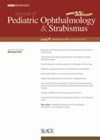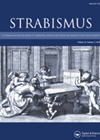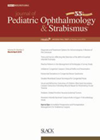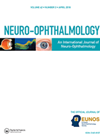You searched for "hypertropia"
Screening outcomes for Syrian refugee children
This study compared two commonly used photoscreeners in a Syrian refugee camp in Jordan to better understand what types of technology would function best in a low-resource setting. The children in this study were assessed with the PEEK acuity application...The orthoptic report – what does it all mean?
An orthoptist report may well look like a piece of Japanese Shodo, however, it does in fact contain some extremely useful information. This piece will briefly explain some of the common brush strokes seen on a report. There is some...En coup de sabre scar and strabismus
This is a case report of an eight-year-old child with gradual progressive strabismus (esotropia and hypotropia) from the age of five years. The angle measured >45 degrees esotropia and 10 degrees hypotropia. There was a depressed linear-localised scar over the...Paralytic strabismus in Parry-Romberg syndrome
Parry-Romberg syndrome is a progressive hemifacial atrophy with idiopathic craniofacial disorder characterised by slowly progressive atrophy of soft tissues on one side of the face. A case is presented of acquired monocular elevation deficit in a child without restrictive component....Augmented surgery for monocular elevation deficiency
The outcomes are described for augmented lateral rectus superior transposition in cases of acquired monocular elevation deficiency (MED) associated with large hypotropia in primary gaze. The lateral rectus was transposed superiorly and reinserted on sclera between the temporal margin of...Smartphone use in screening
This prospective study aimed to determine the positive predictive value (PPV) of patients referred to a pediatric ophthalmic practice in Alaska. Young children were photoscreened with Gobiquity app on a Nokia model 1020 smartphone; 217 children were referred. Time from...Choroidal folds
1 August 2014
| H Ali, Sumith Perera
|
EYE - Cataract, EYE - Cornea, EYE - General, EYE - Glaucoma, EYE - Imaging, EYE - Neuro-ophthalmology, EYE - Oculoplastic, EYE - Oncology, EYE - Orbit, EYE - Paediatrics, EYE - Pathology, EYE - Refractive, EYE - Strabismus, EYE - Vitreo-Retinal
Choroidal folds are undulations of the choroid, Bruch’s membrane and pigment epithelium, with wrinkling of the overlying retina. They may be idiopathic but can also be caused by a number of different conditions. Case report A 60-year-old male patient was...
Unravelling ocular motility
1 April 2016
| Damien CM Yeo
|
EYE - Neuro-ophthalmology
Ocular motility can often be a slightly abstract concept during the earlier years of ophthalmology training. A large variance on what embodies normality; mythical concepts like fusion and binocular vision, examination techniques that can be fiddly, and complex neuroanatomy all...
A case report of bidirectional aberrant upward eye movement
1 February 2016
| Claire Howard
|
EYE - Neuro-ophthalmology
|
Divergence, innervation, oblique muscle, oculomotor nerve, rectus muscle
The authors present a case report of a 14-year-old boy with left ptosis and strabismus since childhood. In primary position he had left hypotropia with ptosis. On elevation of the right eye, the left eye depresses and adducts. Conversely, on...
Horizontal angles in Brown’s syndrome
The purpose of this study was to determine the incidence of horizontal strabismus needing surgical management in Brown’s syndrome. This was a retrospective review of 19 eyes (eight right and 11 left) of 16 patients (seven male and nine female)....Inferior oblique adherence syndrome
5 June 2020
| Fiona Rowe (Prof)
|
EYE - Paediatrics, EYE - Strabismus
|
Inferior oblique anteriorization, hypotropia, inferior oblique adherence, limitation of levoelevation
A case is reported of a 14-year-old with inferior oblique muscle adherence and fat adherence following unilateral inferior oblique (IO) anteriorisation. Following surgery, the patient developed consecutive esotropia, ptosis and marked limitation of laevoelevation. Forced duction test was positive for...








